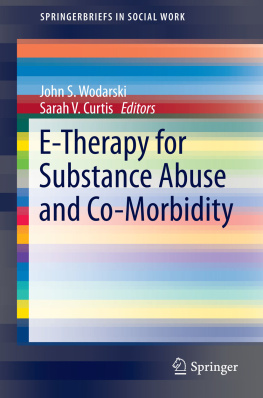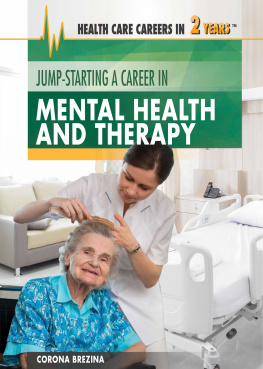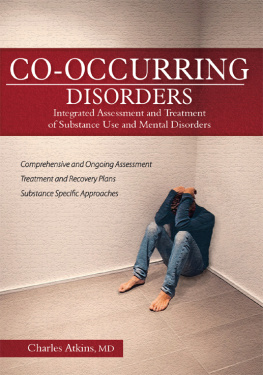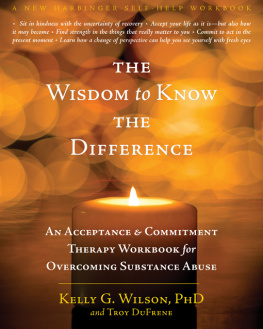1. Application of E-Therapy Programs to Social Work Practice
Taylor and Francis Group. 2013. This is an authors original manuscript of an article published by Taylor and Francis Group in Journal of Human Behavior in the Social Environment on 11 January 2013. http://www.tandfonline.com/10.1080/10911359.2013.737290 .
Technology is ever changing the way people interact and live. Communication is extensively different now, especially when compared to 10 years ago. Social work professionals need to embrace these changes and see how it can benefit their clients. This is a growing area with promising interventions using technology, although there is a need for more research to determine the effective use of these techniques (Postel et al. ).
Research shows that e-therapy has the capacity to reach clients in rural settings (Postel et al. ), but this should not be the cause for avoidance. Instead, social workers should address these ethical dilemmas and pursue technological advantages for the sake of their clients.
E-therapy contains many different beneficial aspects for the client and the social worker. If transportation to an office is unavailable for the client, e-therapy provides the opportunity to offer therapy over the phone or through e-mail. There are websites helping clients work through their panic disorder or other similar issues using cognitive behavioral therapy (CBT). Social workers are also able to improve their skills through online trainings and gain CEUs by becoming trained in trauma-focused CBT ( http://tfcbt.musc.edu/ ). Trainings for social workers on using technology in therapy need to become more accessible to provide knowledge and comfort in using these techniques. Social workers need to pursue the use of technology, allowing them to meet clients where they are.
The use of Technology
The use of technology continues to grow and develop rapidly. The need for social workers to incorporate this wealth of aid is vital, as nearly 70% of Americans and Western Europeans had access to the Internet in 2007 (Postel et al. ).
The use of technology is growing in younger generations. A study in 2009 discovered that 84% of adults aged between 18 and 28 years accessed the Internet for various reasons including school, social networking, and work. Seventy-three percent of these young adults used the Internet to research items regarding their health care (Rogers et al. ).
There are more than 300 professional Internet sites providing therapeutic services and over 500 individual Internet therapists offering private pay services (Rogers et al. ). By utilizing therapy on the phone, through e-mail, or a website, access to help could become a reality for these individuals.
While some researchers advocate that e-therapy should only be used as a supplemental tool (Castelnuovo et al. ). The benefits of receiving treatment when it was not previously an option seems to outweigh the limitations researchers have discovered. As technology increases, the ability of social workers to help the masses will also grow.
Cost Effectiveness
America spends over US$ 150 billion on morbidity, morality, social and psychosocial problems, violence, criminal behavior, and accidents stemming from disorders such as alcoholism, drug abuse, depression, anxiety disorders, and eating disorders (Postel et al. ) discovered that Internet CBT is more cost-effective than individual CBT because it takes less of the clinicians time. They found Internet CBT to be as cost-effective as group therapy, even surpassing group therapy in the relation of reduction of the therapists time.
E-therapy reduces costs for agencies that often require their social workers to travel to assist clients such as older adults, people with physical disabilities, and prison populations (Lovejoy et al. ).
E-therapy can be an option for clients who could not normally afford treatment as programs such as Internet-based self-help can be offered with moderate to no cost to the client. This is particularly helpful for clients who would never have received any help (Blankers et al. ). Various websites that teach clients how to implement therapeutic interventions in their daily life are providing free or budget pricing.
Ethical Considerations
Research needs to boost in the area of maintaining ethical considerations with the growth of technology. E-therapy is in the beginning stages of development and much of the ethical considerations are unclear. The NASW Code of Ethics has not evolved as rapidly as technology, leaving a lack of guidance in the area of e-therapy. There are social workers who are concerned about protecting their own personal rights as well as their clients rights for confidentiality, informed consent, and the ability to access treatment across state lines. Santhiveeran ().
Confidentiality is one of the chief concerns when using technology to assist a client. Ishizuki and Cotter ().
Even as social workers struggle to maintain their clients confidentiality, e-therapy allows clients to access mental health treatment in the privacy of their own home allowing them to receive treatment without fear of being stigmatized (Alcaniz et al. ).
Technology to Assist in Mental Health Treatment
Receiving e-therapy is more beneficial than not obtaining any treatment at all and researchers have even identified positive gains of using e-therapy versus traditional treatment methods. Clients who receive help through an asynchronous form, such as e-mail, are able to reread the conversation they had with the therapist. E-therapy also reduces social workers bias because of the lack of interaction through voice and body language (Santhiveeran ).
There are some proposed limitations to e-therapy, such as difficulties with confidentiality and the lack of proximity of the therapeutic relationship, which can make it difficult to monitor nonverbal behavior (Santhiveeran ).
Research has discovered similarities in e-therapy and face-to-face therapy. For example, clients were willing to disclose their emotions during Internet therapy sessions as in face-to-face therapy proving that e-therapy is a reasonable option to provide to clients (Rogers et al. ).
There are increasingly more ways to assist clientele with e-therapy. Various therapy websites exist that focus on mental health treatment such as Headworks at ).
Interactive self-guided therapy is another intervention that is set up through a website allowing individuals to interact with a regulated, self-guided software program. It is a self-help program with CBT components and offers interactive exercises for the clients. Self-guided interventions are increasingly useful when assisted with text messages through cell phones or smartphone applications. By employing the use of cell phones, clients can use the interventions wherever they are and throughout their day.
Other sources of assistance provided by technology include online support groups, blogging, and psychoeducational websites. Online support groups provide support in the privacy of the clients own home and allow them to gain support from others with similar issues. Blogging is another beneficial aspect available on the Internet that allows clients to experience catharsis and gain feedback from their peers. Psychoeducational websites such as ).












